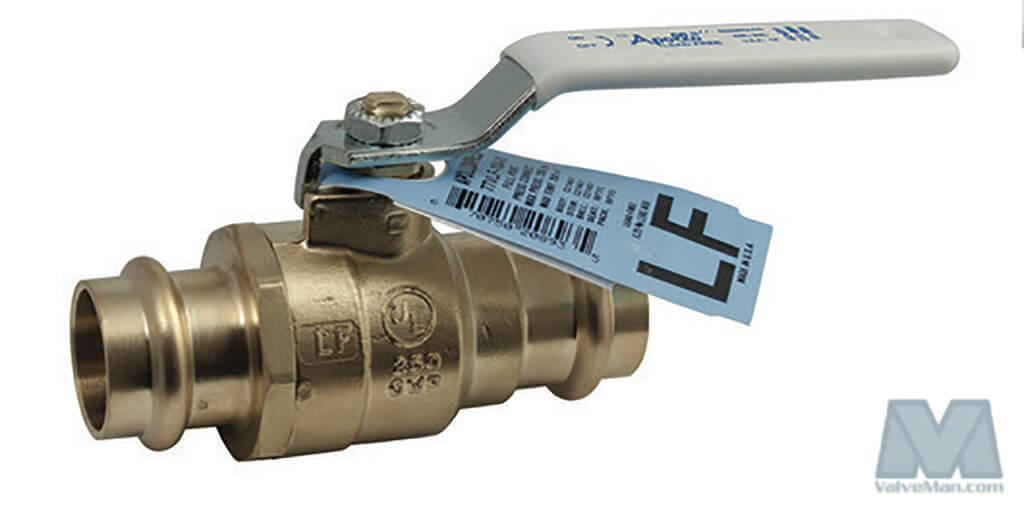Choosing Between Bronze and Brass Valves
Posted by Gilbert Welsford, Jr on Oct 10th 2016
When selecting the right valve material, two of the most common options are brass and bronze. Both alloys are valued for their durability, corrosion resistance, and versatility, but each has distinct properties that make it better suited for certain applications. In this guide, we’ll break down the differences between brass vs bronze valves, including brass vs bronze ball valves, so you can make the right choice for your system.
Brass vs Bronze Valves: Side-By-Side Comparison
|
Property |
Brass Valves |
Bronze Valves |
|
Primary Elements |
Copper + Zinc |
Copper + Tin |
|
Manufacturing Methods |
Cast, forged, extruded, cold drawn |
Mostly cast |
|
Corrosion Resistance |
Excellent in most environments, not ideal for high-chlorine water |
Exceptional in seawater and marine environments |
|
Lead Content |
Lower (lead-free options common) |
Traditionally higher, lead-free versions available |
|
Best For |
Potable water, natural gas, HVAC, general plumbing |
Marine service, saltwater, heavy-duty waterworks |
|
Cost |
Generally lower |
Slightly higher, but long-lasting in harsh conditions |
Key takeaway:
- Choose brass valves for general-purpose, potable water, and gas applications—especially where dezincification is not a concern.
- Choose bronze valves for marine environments, saltwater exposure, and heavy-duty water systems.
Brass vs Bronze Ball Valves
When it comes to ball valves, both brass and bronze offer dependable service, but their suitability depends on the environment:
- Brass ball valves are widely used for plumbing, gas lines, and industrial systems where corrosion levels are moderate.
- Bronze ball valves excel in seawater and brackish water service, making them common in shipbuilding, offshore platforms, and coastal installations.
Bronze Valve Overview
The Romans were probably the first to fashion flow control valves--very similar to those of today--out of bronze as early as the 1st Century B.C. Piping was manufactured out of lead, as were the welds connecting systems together. Much like modern bronze valves of today, the Romans used copper, tin, and lead to make the metal malleable, though today's bronze sometimes includes manganese or aluminum as additives, as well as nickel. One drawback of bronze is that valves can only be produced by casting, or by machining cast ingots. The rough exterior of bronze--which is known for porosity and shrinkage cavities--is a direct result of casting (though bronze alloys containing nickel, lead, and bismuth will hold a polish). On the upside, bronze is fairly inexpensive, extremely ductile, and is great for resisting corrosion, particularly from any corrosives similar to seawater.
Advantages of bronze valves:
- Excellent corrosion resistance, especially in marine and saltwater applications
- Very durable and ductile under stress
- Well-suited for low-cost, long-lasting service in water systems
- Historically the go-to choice for seawater piping and shipbuilding
Limitations: Bronze is generally more porous than brass, making it less ideal for high-polish finishes. Traditional bronze also contains higher lead content, which is why lead-free bronze valves are now preferred for potable water systems.
Brass Valves Overview
Even more malleable than bronze, brass is also more versatile, as different combinations of copper and zinc create a wide range of brasses with varying properties. Brass also lends itself well to manufacturing, as it can be cast, forged, heat extruded, or cold drawn in its creation. It is very machinable, and its smooth surface helps keep finishing costs down. Brass is highly corrosion resistant, though high levels of chlorine can break down zinc content. Otherwise, brass is perfect for a variety of media, including natural gas. And, for potable water, brass is a natural choice over bronze, as it typically contains much lower levels of lead than bronze.

Of course, by today's standards, these contrasts and comparisons are rudimentary. Modern metallurgy is far more advanced than what even the Romans may have dreamed of. Today's foundries cast superior bronze alloys which are utilized for countless applications, though use for potable water is slowly being phased out. Likewise, modern brass alloys that resist dezincification--a problem associated with standard extruded brass (because of the zinc content)--are being produced via hi-tech fabricating techniques using chemicals and heat. These breakthroughs in metallurgy help to negate a need for lead in the mix, and increase the longevity of piping and valves, ensuring the continued use of brass for years to come. But, while brass enjoys several advantages over bronze, don't count it out just yet. Lead Free Bronze valves (bronze valves meeting or exceeding Clean Water Act lead restrictions) are readily available, and are generally the first choice for water pipes with diameters under 3" when keeping costs down is a must. Coincidentally, it's no mystery that both bronze and brass are favored as valve material by numerous industries utilizing piping systems, as both alloys have excellent solderability characteristics.
Advantages of brass valves:
- Highly corrosion resistant in most environments
- Smooth surfaces reduce finishing costs
- Easy to machine and modify
- Lower lead content compared to traditional bronze (especially in lead-free brass)
- Suitable for potable water, natural gas, and many industrial fluids
Limitations: Brass can be susceptible to dezincification (zinc loss) in environments with high chlorine levels, which can weaken the material over time. Modern dezincification-resistant (DZR) brass helps mitigate this issue.
More Valve Resources from ValveMan
If this article has helped you understand the difference between bronze and brass valves, and you would like more information about modern valve fabrication and choices, you might enjoy reading:

 888-825-8800
888-825-8800









